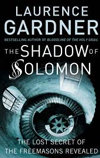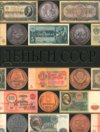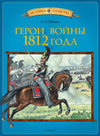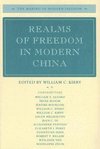
-
 Anglický jazyk
Anglický jazyk
Ships built in Missouri
Autor: Source: Wikipedia
Source: Wikipedia. Pages: 27. Chapters: City class ironclad, Neosho class monitor, SS Admiral, USS Baron DeKalb (1861), USS Benton (1861), USS Carondelet (1861), USS Chickasaw (1864), USS Cincinnati (1862), USS Dahlia (1862), USS Etlah (1864), USS Ivy (1862),... Viac o knihe
Na objednávku, dodanie 2-4 týždne
14.49 €
bežná cena: 16.10 €
O knihe
Source: Wikipedia. Pages: 27. Chapters: City class ironclad, Neosho class monitor, SS Admiral, USS Baron DeKalb (1861), USS Benton (1861), USS Carondelet (1861), USS Chickasaw (1864), USS Cincinnati (1862), USS Dahlia (1862), USS Etlah (1864), USS Ivy (1862), USS Kickapoo (1864), USS Lafayette (1848), USS Laurel (1862), USS Louisville (1862), USS Milwaukee (1864), USS Mistletoe (1861), USS Neosho (1863), USS Osage (1863), USS Pansy (1861), USS Pittsburgh (1861), USS Red Rover (1859), USS Winnebago (1863). Excerpt: The Pook Turtles, or City class gunboats to use their semi-official name, were war vessels intended for service on the Mississippi River during the American Civil War. They were also sometimes referred to as "Eads gunboats." The labels are applied to seven vessels of uniform design built from the keel up in Carondelet, Missouri shipyards owned by James Buchanan Eads. Eads was a wealthy St. Louis industrialist who risked his fortune in support of the Union. The City Class gunboats were the United States' first ironclad warships. The gunboats produced by Eads formed the core of the US Army's Western Gunboat Flotilla, which later was transferred to the US Navy and became the Mississippi River Squadron. Eads gunboats took part in almost every significant action on the upper Mississippi and its tributaries from their first offensive use at the Battle of Fort Henry until the end of the war. James Buchanan Eads In the early days of the Civil War, before it was certain that the secession movement had been thwarted in Missouri and before it was known that Kentucky would remain in the Union, James B. Eads offered one of his salvage vessels, Submarine No. 7, to the Federal government for conversion to a warship for service on the western rivers. In a letter he wrote to Secretary of the Navy Gideon Welles, he pointed out that the catamaran-type hull of his boat was already divided into several watertight compartments, and therefore could sustain numerous hits by enemy artillery without danger of sinking. As the interior of the country was the responsibility of the Army and not the Navy, Welles passed the letter on to Secretary of War Simon Cameron, who in turn referred it to Major General of Volunteers George B. McClellan for consideration. McClellan was commander of the Department of the Ohio, with responsibilities that included defense of the Ohio River and the parts of the Mississippi that were not in Confederate control. At about the same time that McClellan received the le
- Vydavateľstvo: Books LLC, Reference Series
- Rok vydania: 2020
- Formát: Paperback
- Rozmer: 246 x 189 mm
- Jazyk: Anglický jazyk
- ISBN: 9781155847641






 Ruský jazyk
Ruský jazyk 





